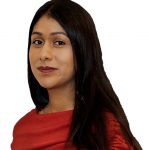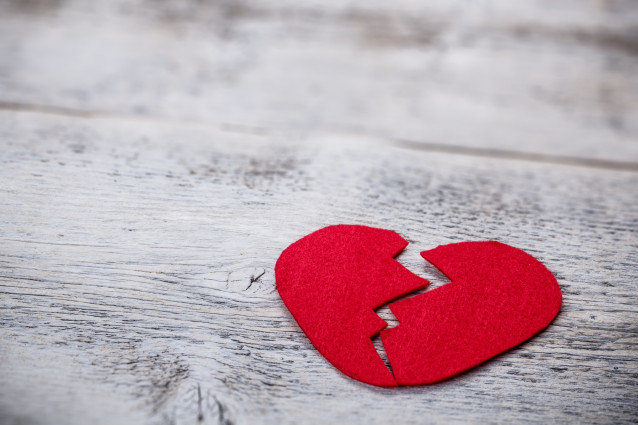Transformative Social and Emotional Learning (SEL) as a Catalyst for Climate Action
I spent five years living under the shadow of the Chevron Oil Refinery on the unceded land of the Ohlone people known as Richmond, California. In 2012, a toxic explosion sent 15,000 to the hospital, primarily people of color. Like many refinery town residents, our family moved to Richmond because it was more affordable. Experiencing oil spills and constant flaring firsthand was a pressing reminder of how systemic racism, exploitative practices, and our dominant capitalist culture are inextricably linked with our climate crisis. Soon after landing in our new home, we connected with a group of Indigenous grandmothers through The Refinery Corridor Healing Walks. Over four years, the grandmothers fused political activism with the sacred traditions of prayer walking and healing as they rallied local communities in the fight to reclaim their land and water from the companies that have poisoned their towns along the five oil refineries of the North Bay and Sacramento Rivers. It was a powerful experience to be in community with others who were experiencing the impact of living near an oil refinery firsthand. While climate changes affect us all, historically excluded, under-resourced communities worldwide have contributed the least to climate change and they are impacted the most by our planetary crisis. This is unjust.
There’s a saying in the climate movement that to change everything will take everyone. In my work as an educational leader of color dedicated to transforming school communities through Social and Emotional Learning (SEL), I believe it’s imperative that schools ultimately position SEL in service of a shift in collective consciousness—a shift where we truly care for each other and our planet as we engage in active hope to collectively and compassionately address racial injustice and our climate crisis.
As we continue to grapple with COVID-19’s impact on mental health, schools have prioritized SEL to support the wellbeing of their staff and students. While this focus on wellbeing is critical, it is also important that SEL isn’t just a band-aid; rather SEL offers an ideal means for engaging in the deeper inner work necessary to transform our schools and society.
What is Transformative SEL?
Social and Emotional Learning (SEL) traditionally refers to the essential skills and competencies we all need for life success. These include self-awareness, goal setting, managing strong emotions, cultivating empathy, social awareness, relationship skills, problem-solving, and making healthy decisions. For years, SEL programming was thought to be race and culture neutral but we know that nothing is race and culture neutral. From the start, schooling in the United States was designed to “benefit and affirm the values and culture of the white people in power,” and it is this dominant culture that has “shaped the educational structures and policies that articulate how children are expected to behave, communicate, and interact” (Chatmon & Osta, 2018).
As the SEL field begins to look more deeply at the ways in which SEL programming can reinforce dominant-culture norms and perpetuate inequitable systems and structures, there’s recognition of the need to shift and engage in what is now known as Transformative SEL: “Transformative SEL is a process whereby young people and adults build strong, respectful and lasting relationships that facilitate co-learning to critically examine root causes of inequity, and to develop collaborative solutions that lead to personal, community, and societal wellbeing” (CASEL, 2021). Key elements of Transformative SEL include focusing “SEL implementation and practice on transforming inequitable settings and systems and promoting justice-oriented civic engagement; redistributing power to promote justice through increased engagement in school and civic life; and emphasizing the equity-centered focal constructs of identity, agency, belonging, collaborative problem solving and curiosity” (CASEL, 2021).
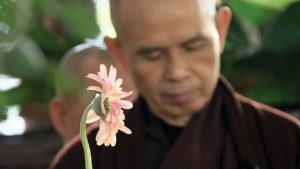 Over the last decade, mindfulness has been increasingly incorporated into SEL programming. The organization I lead, Transformative Educational Leadership (TEL), defines mindfulness as “both a practice and a way of being with which we compassionately attend to the unfolding reality of the present moment within and without.” When we add transformative to this definition, we open our attention to include the systems—educational, social, ecological, and economic—that we are nested within. With transformative mindfulness, we strive to expand our awareness of interbeing. Interbeing is a term coined by my spiritual teacher, Thich Nhat Hanh, meaning to inter-dependently co-exist. Interbeing honors the interdependence of every person with all other persons, beings, and elements of nature. From such a perspective, we are better able bear witness to suffering in its many forms, and act to create a more compassionate and just world through healing-centered engagement.
Over the last decade, mindfulness has been increasingly incorporated into SEL programming. The organization I lead, Transformative Educational Leadership (TEL), defines mindfulness as “both a practice and a way of being with which we compassionately attend to the unfolding reality of the present moment within and without.” When we add transformative to this definition, we open our attention to include the systems—educational, social, ecological, and economic—that we are nested within. With transformative mindfulness, we strive to expand our awareness of interbeing. Interbeing is a term coined by my spiritual teacher, Thich Nhat Hanh, meaning to inter-dependently co-exist. Interbeing honors the interdependence of every person with all other persons, beings, and elements of nature. From such a perspective, we are better able bear witness to suffering in its many forms, and act to create a more compassionate and just world through healing-centered engagement.
I came up with the word interbeing many decades ago. The verb “to be” can be misleading, because we cannot be with ourselves alone. “To be” is always “inter-be.” If we combine the prefix “inter” with the verb “to be,” we have a new verb, “inter-be.” To “inter-be” and the action of interbeing reflects reality more accurately. We inter-are with one another and all life. -Thich Nhat Hanh, 1987
In a beautiful illustration of interbeing, Thich Nhat Hanh writes:
“If you are a poet, you will see clearly that there is a cloud floating in this sheet of paper. Without a cloud, there will be no rain; without rain, the trees cannot grow, and without trees, we cannot make paper. The cloud is essential for the paper to exist. If the cloud is not here, the sheet of paper cannot be here either. So we can say that the cloud and the paper inter-are” (Nhat Hanh, 1992).
He goes on to say that if you look deeply enough, you’ll see the logger who cut down the tree and the logger’s ancestors as well, in that sheet of paper. An interbeing consciousness is a shift from a transactional way of being in the world to one where we recognize how we all are a product of infinite causes and conditions with our actions impacting others and the earth. The nonviolence Gandhi and Dr. King practiced is grounded in interbeing. Dr. King wrote, “All life is interrelated, and we are all caught in an inescapable network of mutuality, tied in a single garment of identity. Whatever affects one directly, affects all indirectly…this is the interrelated structure of reality” (King, 2001).
Interbeing honors the interdependence of every person with all other persons, beings, and elements of nature. Interbeing is fundamental to Transformative SEL and aligns beautifully with the principles of deep ecology.
Deep ecology does not see the world as a collection of isolated objects but rather as a network of phenomena that are fundamentally interconnected and interdependent. It recognizes the intrinsic value of all living beings and views humans—in the celebrated words attributed to Chief Seattle—as just one particular strand in the web of life. – Fritjof Capra, 1975
The Root Cause of Racial Injustice and Our Climate Crisis: A Lack of Interbeing Consciousness
Transformative SEL invites us to examine “root causes of inequity” (CASEL, 2020). For me, the root cause of inequity is not valuing all life equally, a lack of interbeing consciousness. Colonization, slavery, capitalism, economic exploitation, and continual extraction of the earth’s resources are built on the belief that all lives are not equal. When asked about the connections between racial injustice and our planetary crisis, Dr. Larry Ward, author of America’s Racial Karma, said, “It’s really quite simple. We treat Black people and the Earth the same—as if their lives are disposable and the earth is ours for taking” (Ward, 2021).
Until interbeing becomes a foundation for how we bring SEL into education, these approaches will still ultimately reinforce a transactional, anthropocentric way of being in the world. Rene Descartes said, “I think, therefore I am,” placing the self in the center of one’s worldview and establishing the Western outlook still prevalent today. This dualism has brought great harm to our planet and its inhabitants. Inspired by his Indian spiritual roots, ecological activist, Satish Kumar, turns around Descartes’ phrase and offers us instead, “You Are Therefore I Am: A Declaration of Dependence” (2002). Kumar offers a worldview rooted in relationships and the connections of all things, instead of the separation inherent in the Western worldview. In the SEL world, we talk about needing to connect but the ultimate truth is that we are already connected, we inter-are. What we need to do is become aware of this at a much deeper level and act from this place accordingly. The moment we collectively shift toward an interbeing consciousness and live our lives with deep awareness of how we “inter-are” then it won’t be okay for anyone to live near an oil refinery, drink water with high levels of lead, or work in, let alone consume meat from, a factory farm.
One SEL program that is already incorporating a systems level component that can cultivate an interbeing consciousness is SEE Learning developed by Emory University. The emphasis on supporting students with understanding how systems interact is essential for our times. One of the most powerful ways we can begin to grow our awareness of interbeing is to spend time in nature. Nature supports social and emotional health and wellbeing and research suggests that outdoor experiences have tremendous benefits—socially, emotionally, spiritually, and academically.
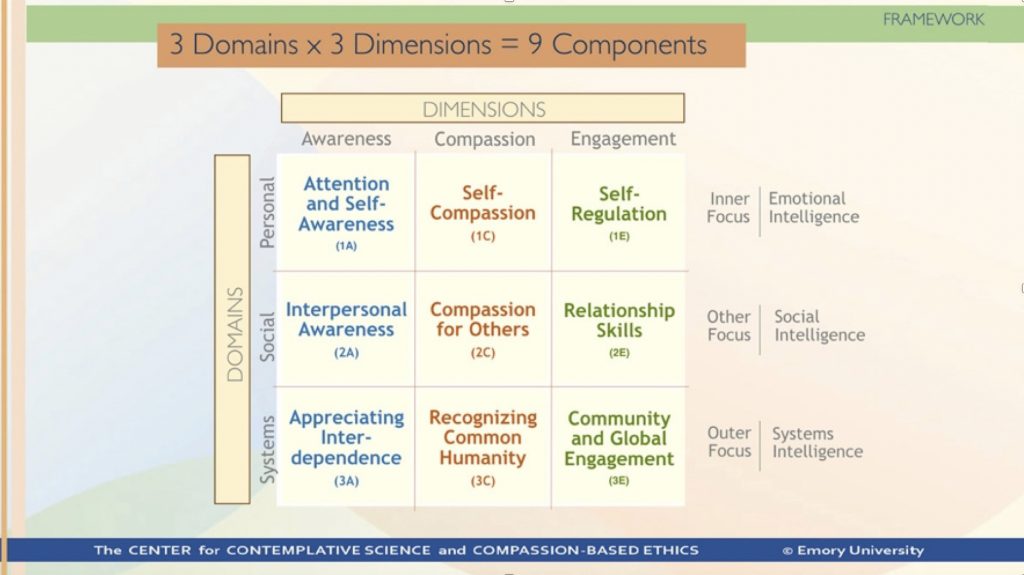
False Dichotomy: Racial Justice OR Climate Action
Those who are most at risk to the impacts of climate change are also the populations that already live without access to adequate food, sanitation, and clean water. The United Nations has warned that climate change will push 120 million people into poverty (Kottasova, 2019). The panic and fear some of us experience when we think about the future as it relates to our climate crisis is already the glaring reality many face globally. During the five and a half years I spent implementing SEL in the Oakland Unified School District, our newcomer population rose tremendously, and it was clear that climate change is a key factor in migration—natural disasters and food insecurity in Mexico, Honduras, Guatemala and El Salvador account for rising numbers at the US border. Climate solutions benefit all of us, just as climate risks threaten all of us, but climate action benefits the historically excluded, under-resourced most and that is just.
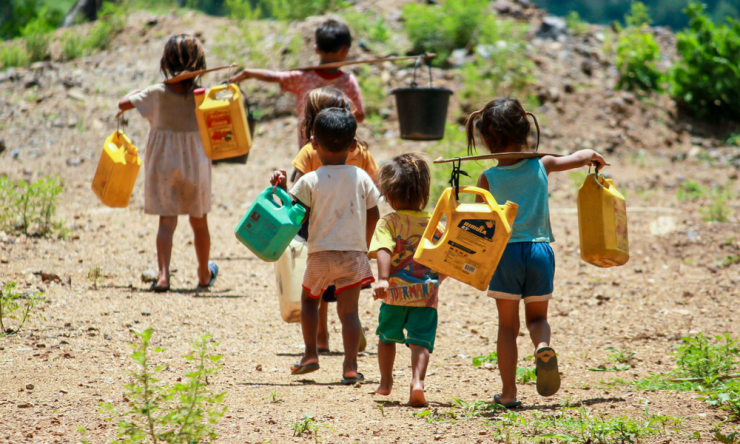
TEL recently held a conference in partnership with the Omega Institute entitled, Caring for Each Other and Our Planet and a real tension surfaced around how can communities that are literally in survival mode be asked to also now focus on protecting the planet. I want to be clear that I am not asking those who have a knee on their neck to engage in climate action. My relative privilege as a South Asian American woman makes it clear to me that my role is to ease the burden on my Black, Indigenous, and Latinx brothers and sisters and those who experience othering more than myself. What I am suggesting is that it isn’t an either/or when it comes to racial justice and climate action but rather a both/and.
Over the last year there have been several conversations about “Decolonizing SEL.” There is no real synonym for decolonization. You can’t substitute human rights or social justice for it, and for me it involves the crafting of a path forward that is rooted in the heart of indigenous cultures: kinship. Kinship involves living from a place where one is established in their relationship to each other, the universe, the land, and nature—all of life is part of one’s family and relations are not just blood relatives. As we engage in conversations about “decolonizing SEL,” those of us who have the capacity and the will can also bring the climate dimension into these discussions so we can see our justice work as interrelated and mutually reinforcing. For me, decolonizing SEL also involves safeguarding our planet. It’s a both/and, and we need all our passion and engagement to build a diverse and powerful movement strong enough to create the world we all need and deserve.
The Role of Schools as Part of the Solution
One out of every six Americans is enrolled in public education and the way schools consume energy, food, and engage in transportation can play a critical role in protecting our planet, especially if we think about the impact schools could have globally if every school engaged in climate action. Right now, across the board, schools are not models of sustainability. Annual energy costs for US educational institutions have been estimated at $8 billion annually—the second highest cost for schools after salaries (US Department of Energy, 2016). School buses drive 5.7 billion miles annually (Doug Shinkle, 2021). Schools serve over 7 billion meals each year and produce an estimated 530,000 tons of food waste annually (World Wildlife Fund, 2019). Sadly, only twenty-nine states and the District of Columbia bring climate change into their science standards, and only five states include climate change in social studies standards (K12 Climate Action, 2020).
If we prioritize advancing a more sustainable world, the schools which serve more than 50 million young people can be a critical force in addressing climate change (NCES, 2021). We can have tremendous impact in building a greener economy by providing more career and technical education programs that support clean energy jobs. Schools can also lead the way in building more sustainable operations. The “development of collaborative solutions” (CASEL, 2020) that SEL calls for are an opportunity to support students in engaging in climate action. Schools are part of the problem, and they also have an opportunity to be part of the solution. There’s great possibility through fusing Transformative SEL with Education for Sustainable Development (ESD) which “empowers people to change the way they think and work towards a sustainable future” (UNESCO).
Beloved Community Extending to the Earth
Dr. King popularized the term “Beloved Community” and infused it with deep meaning. For me, Beloved Community must also extend to the Earth. Here are some initial ideas that link a climate action connection to CASEL’s Five Core SEL competencies, their Equity Focal constructs, and the Education for Sustainable Development Principles. (printable graphic here)
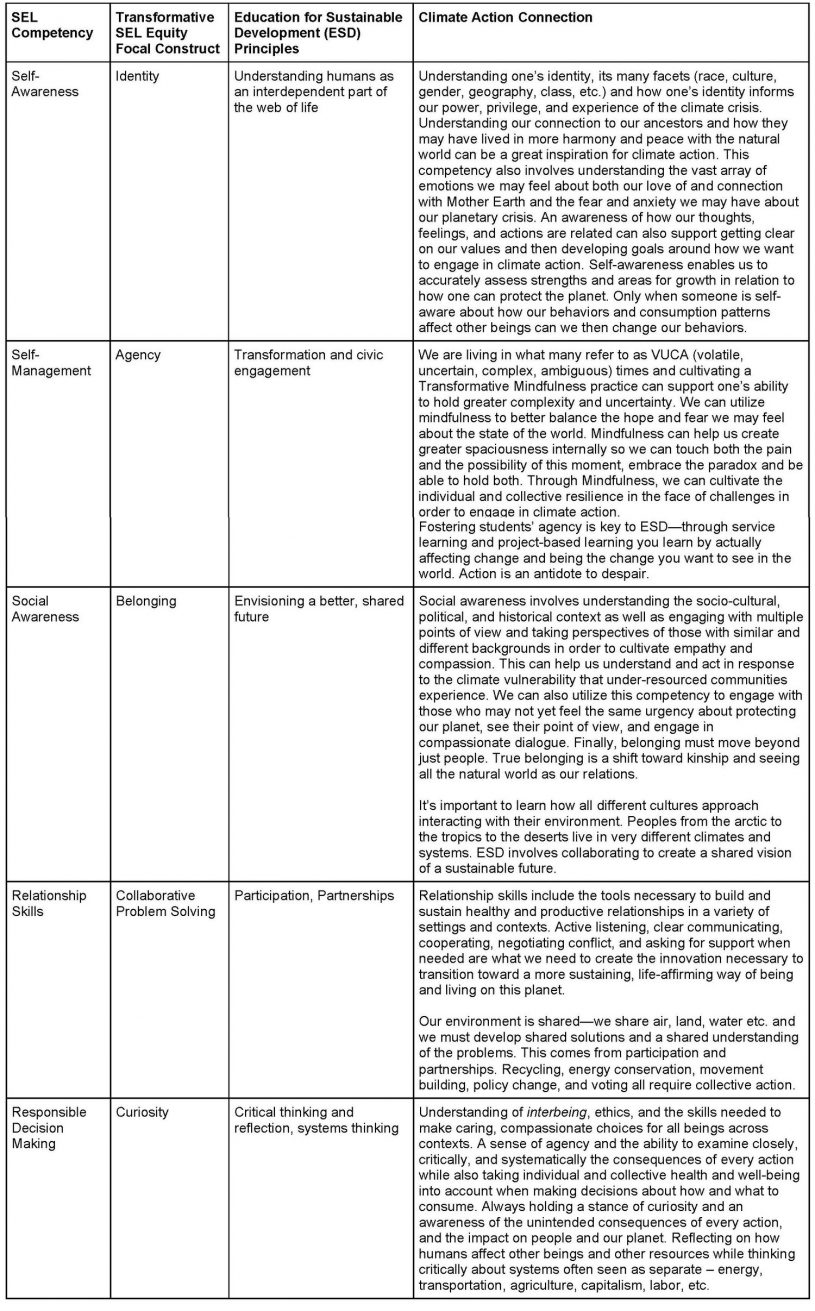
Active Hope: What Kind of Ancestor are You Willing to Be?
Hope is on one end of a spectrum of how we meet the present moment and envision our future and at the other end is despair. Right now, having hope matters and I am not talking about hoping that our experience could be different. I’m talking about active hope, the idea coined by Joanna Macy, that hope is something we do rather than merely have. She writes about The Great Turning which is a name for the “essential adventure of our time: the shift from the Industrial Growth Society to a life-sustaining civilization” (Macy, 2009). This adventure will birth new strengths, a wider network, and an experience of deepening our aliveness with great meaning and purpose. Active hope means having a clear vision about what we are hoping for and then deliberately playing our roles to make that vision a reality. As David Orr, professor emeritus of Oberlin College and a leading educator on environmental studies said, “Hope is a verb with its sleeves rolled up.” Schools have a powerful role to play in creating a more compassionate, just, and sustainable world. Together we can alter the climate path.
In the world of education, we often focus on “essential questions.” Essential questions as defined by Wiggins and McTighe, the authors of Understanding by Design, are “questions that are not answerable with finality in a brief sentence. . . . Their aim is to stimulate thought, to provoke inquiry, and to spark more questions—including thoughtful student questions—not just pat answers” (Wiggins & McTighe, 2008). The essential question I hold deep in my heart is from Dr. Larry Ward: “What kind of ancestor do I want to be?” Just as the Seventh Generation Principle from Iroquois philosophy asks us to hold the long view of every decision and action we take, and reflect on the impact seven generations from now, this question can be a great anchor in driving how we show up daily and how we go about teaching SEL in schools. You can implement an SEL curriculum but if you are not asking yourself in each moment, “What kind of ancestor do I want to be?” your SEL won’t necessarily be transformative. As a lifelong educator I see schools as the unit of change. Let’s all seize this moment to tap into our circles of influence and bring an interbeing consciousness to the prioritization of SEL so we can evolve together and create the conditions for the paradigm shift needed by our planet and all of its inhabitants.
Works Cited


